
Theretra silhetensis, the brown-banded hunter hawkmoth, is a moth of the family Sphingidae described by Francis Walker in 1856. It lives in Indo-Australia, India, Sri Lanka, Papua New Guinea, East Australia, Solomon Islands, Fiji Islands, Vanuatu Islands.

Psimada is a monotypic moth genus of the family Noctuidae. Its only species, Psimada quadripennis, is found in the Indian subregion, southern China, Taiwan, Myanmar, Thailand, Sri Lanka, the Andaman Islands, Sundaland, Sulawesi and Seram. Both the genus and species were first described by Francis Walker in 1858.

Tephriopis is a monotypic moth genus of the family Erebidae. Its only species, Tephriopis divulsa, was first described by Francis Walker in 1865.

Ozola is a genus of moths in the family Geometridae first described by Francis Walker in 1861.
Trichoplusia lectula is a moth of the family Noctuidae first described by Francis Walker in 1858. It is found throughout Asia, including the Indian subregion, Sri Lanka, Thailand, Borneo, Java, Japan, as well as Western Australia and Queensland.
Pterophorus niveodactyla is a moth of the family Pterophoridae. It is found in Taiwan, China, India, Sri Lanka, Malaya, Java, Sumatra, the Philippines, Borneo, New Guinea, Micronesia, the Bismarck Islands, the Solomon Islands and São Tomé & Principe.

Rhinoprora palpata is a moth in the family Geometridae. It is found in the Indian subregion, Sri Lanka and western China, as well as on Java, Borneo and Taiwan. The habitat consists of mountainous areas.
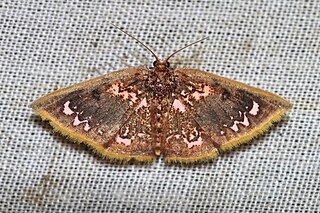
Chrysocraspeda abhadraca is a species of moth in the family Geometridae described by Francis Walker in 1861. It is found in Indian subregion including India and Sri Lanka, Peninsular Malaysia, Sumatra and Borneo.
Episparis liturata is a moth of the family Noctuidae first described by George Hampson in 1893. It is found in India, Sri Lanka, Java, Borneo, Myanmar, China and Thailand.
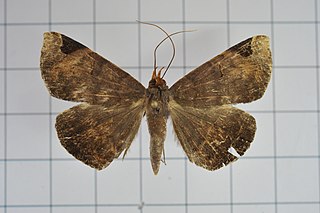
Mecodina praecipua is a moth of the family Noctuidae first described by Francis Walker in 1865.
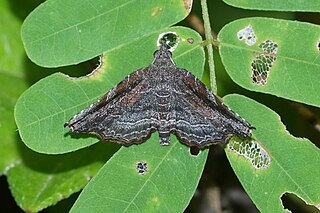
Nagadeba indecoralis is a moth of the family Noctuidae first described by Francis Walker in 1865. It is found in Sri Lanka, Java, India, Myanmar, India's Andaman Islands, Japan and Taiwan.
Saroba ceylonica is a moth of the family Noctuidae first described by Francis Walker in 1865. It is found in the Indian subregion, the Andaman Islands, Singapore, Sumatra, Borneo and Sri Lanka.
Comostola chlorargyra is a moth of the family Geometridae first described by Francis Walker in 1861. It is found in Sri Lanka, the Indian subregion, the Andaman Islands, Borneo, Java, the Philippines, Sulawesi and Australia.
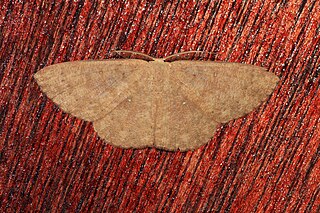
Perixera absconditaria is a moth of the family Geometridae first described by Francis Walker in 1862. It is found in the Indian subregion, Sri Lanka, to Taiwan, Sundaland and the Philippines.
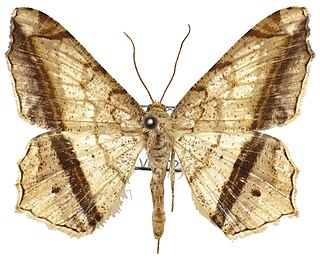
Semiothisa ozararia, is a moth of the family Geometridae first described by Francis Walker in 1860. It is found in the Indian subregion, Sri Lanka, Taiwan, Borneo, Sumatra and Java.
Avitta ophiusalis is a moth of the family Noctuidae first described by Francis Walker in 1859. It is found in Indian subregion, Sri Lanka, China, Japan, Sundaland, Sulawesi, Queensland, Solomon Islands, Vanuatu, Fiji and New Caledonia.

Rivula aequalis is a moth of the family Erebidae first described by Francis Walker in 1863. It is found in Sri Lanka, the Indian subregion, Japan, Sundaland, the Philippines and Sulawesi.
Nycteola indica is a moth of the family Nolidae first described by Rudolf Felder in 1874. It is found in Sri Lanka, India, Myanmar, Borneo, and Australia.
Nycteola poliophaea is a moth of the family Nolidae first described by George Hampson in 1907. It is found in Sri Lanka and India.
Nola lucidalis is a moth of the family Nolidae first described by Francis Walker in 1864. It is found in the Indian subregion, Sri Lanka, Borneo, Java, the Philippines and Taiwan.











